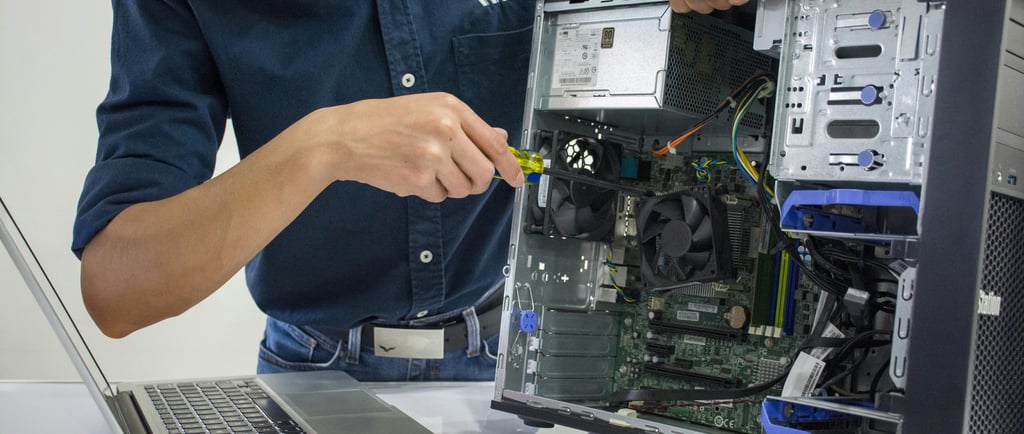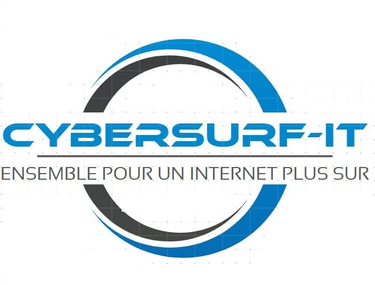Understanding the motherboard: the heart of the computer
Discover the central role of the motherboard in a computer, its key components such as the processor (CPU), RAM memory, SATA and PCIe connectors, and how the BIOS/UEFI works. This article is an essential introduction for anyone wishing to master hardware architecture and prepare for the TAI course.
COMPTIA A+ / IT SUPPORT
Abderazek B.
2 min read


Introduction to the Motherboard: Understanding the Heart of Your Computer
Why Is the Motherboard Essential?
The motherboard is much more than just a circuit board; it is the central nervous system of any computer. As a true interconnection platform, it ensures smooth communication between the processor (CPU), random access memory (RAM), storage devices, graphics cards, and all other essential components. Without it, your computer could neither boot nor operate efficiently.
In this article, you will discover the key functions of the motherboard, its main components, and the crucial role of the BIOS and UEFI in system startup and management. Whether you are a student in IT support or a professional looking to deepen your knowledge, this introduction will prepare you to master the essential basics.
Essential Components of the Motherboard
The Processor: The Brain of the Computer
The processor, installed on the motherboard via a CPU socket, executes program instructions and processes data. Modern processors often feature multiple cores, enabling simultaneous task execution and improving overall performance.
Random Access Memory (RAM): Temporary Memory
RAM temporarily stores data and instructions used by the CPU. Its capacity and speed directly affect system responsiveness, especially during multitasking or running resource-intensive applications.
Storage: HDD and SSD
The motherboard supports various storage types:
Hard Disk Drives (HDDs) offer large capacity at a lower cost.
Solid State Drives (SSDs) provide much faster speeds, reducing boot and load times.
Graphics Cards and Other Extensions
Graphics cards connect via PCI Express (PCIe) ports, offloading display-related calculations from the CPU-essential for gaming and graphic-intensive applications. The motherboard also offers connectors for peripherals such as keyboards, mice, printers, and network cards.
Connectors, Chipset, and Internal Architecture
The motherboard includes several vital connectors:
CPU socket for the processor.
DIMM slots for RAM modules.
SATA ports for storage devices.
PCIe slots for expansion cards.
The chipset, divided into the northbridge and southbridge, manages communications:
The northbridge handles high-speed exchanges between the CPU, RAM, and graphics controller.
The southbridge controls slower peripherals such as USB ports, audio, and storage.
This architecture ensures smooth communication and optimizes performance.
BIOS and UEFI: Firmware at the Service of Startup
The BIOS (Basic Input/Output System) is firmware responsible for initializing hardware during startup through a series of tests (POST) and then launching the operating system. It acts as an interface between hardware and software.
The UEFI (Unified Extensible Firmware Interface), the modern successor to BIOS, offers a user-friendly graphical interface, supports larger disks, and integrates advanced features like Secure Boot to enhance security. UEFI also enables faster boot times and better management of modern components.
Mastering these systems is essential for diagnosing startup issues and configuring optimal settings.
Practical Tips for IT Support Technicians
Familiarize yourself with different CPU sockets and motherboard form factors to ensure component compatibility.
Learn to identify SATA, PCIe, and DIMM connectors to facilitate assembly and maintenance.
Understand the chipset’s role to better diagnose internal communication issues.
Explore BIOS/UEFI interfaces to configure and optimize systems.
Use diagnostic tools (e.g., POST codes, monitoring software) to quickly detect failures.
Quick Quiz: Test Your Knowledge
Which component is considered the brain of the computer?
What is the purpose of RAM?
What is the main difference between HDD and SSD?
Which port is used to connect a graphics card?
What does the BIOS do during computer startup?
Conclusion
The motherboard is the cornerstone that ensures your computer’s coherence and performance. Understanding it is essential for any IT support professional. By mastering its components, architecture, and firmware, you will be better equipped to assemble, troubleshoot, and optimize computer systems.
What has your experience been with motherboards? Share your questions or tips in the comments!
Learning
Knowledge sharing in system administration, networking, and cybersecurity
Community
Technology
contact@cybersurf-
© 2024. All rights reserved.
